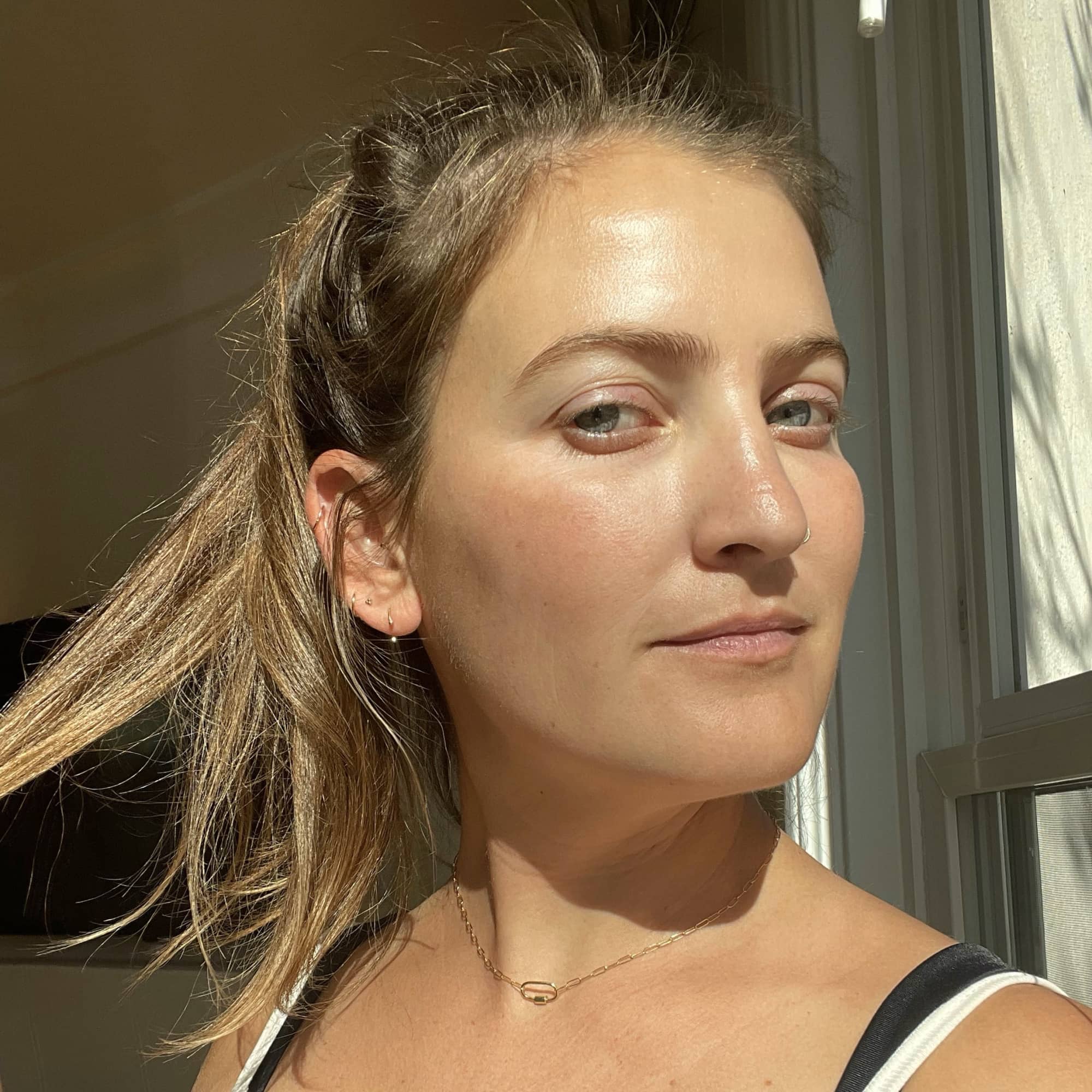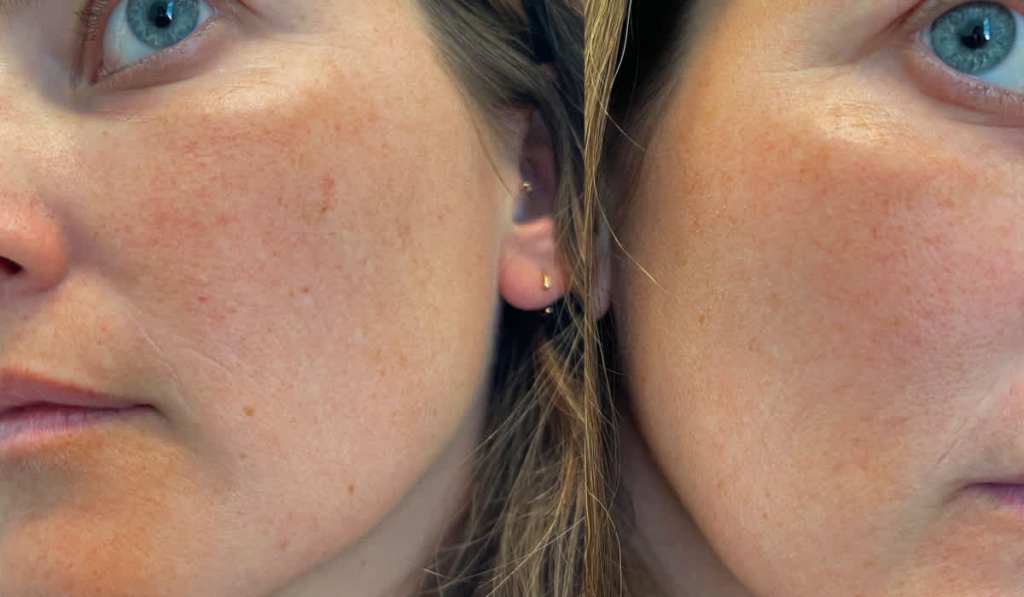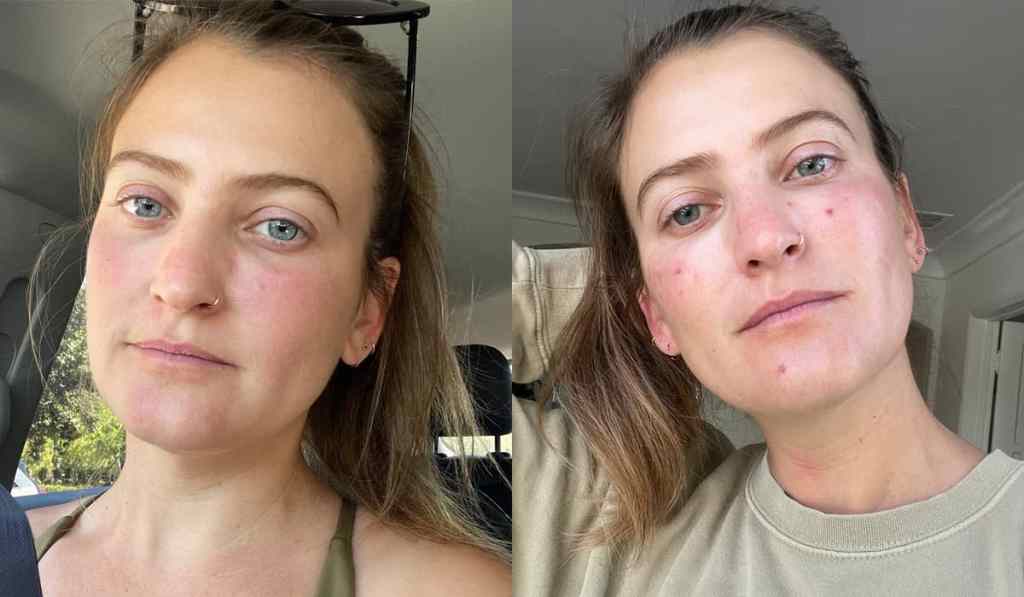
- POPSUGAR Australia
- Beauty
- I Got a Laser Treatment to Treat the Broken Capillaries on My Face – Here’s How It Went
I Got a Laser Treatment to Treat the Broken Capillaries on My Face – Here’s How It Went

- Broken capillaries are enlarged blood vessels just beneath the surface of the skin.
- These manifest as little red dots on the face and are very common.
- Laser treatments like the Pulsed Dye Laser can be quite effective in treating broken capillaries.
No matter how “good” your skin is (a term I use loosely), there are always those little things about your complexion that you get stuck on. More often than not, the issue that’s bothering you is something only you notice, but it’s annoying all the same. For me, that thing that makes me go “ugh” every time I look in the mirror is broken capillaries. TBH, I didn’t even know the name for those little red dots and visible veins on my face until recently – I just knew that they were something I cringed at, even when my skin was looking its best and brightest.
At my most recent visit to Jennifer Herrmann, MD, FAAD, a board-certified, fellowship-trained dermatologist and dermatologic surgeon, she said, “You know those red marks on your face? Those are broken capillaries, and we can get rid of them using PDL.” What is PDL, I asked? Put (very) simply, Pulsed Dye Laser is a heat-based laser that targets hemoglobin, a protein in red blood cells, to zap away those red spots in no time.
Without hesitation, I jumped at the chance. So, Dr. Herrmann, who is a member of the Beverly Hills-based practice Moy, Fincher, Chipps, gave me all the details on PDL – and being the investigative type, I wanted to share this newfound knowledge.
Keep reading to learn more about why PDL is the right laser for broken capillaries, and see my before and after results.
My Skin Before Getting PDL
What Are Broken Capillaries?
Here is a close up of what broken capillaries looked like on my skin. Broken capillaries occur when the walls of the blood vessels beneath the surface of the skin are damaged and become dilated (aka enlarged). They can look like webbed spider veins, red splotches, or more enlarged singular veins. They usually pop up around your chin, cheeks, and nose – and I have a few dots around my lips.
What Causes Broken Capillaries?
The reality is that anyone can get broken capillaries, but they just tend to show up more on people with lighter skin tones. People with rosacea are particularly prone to broken capillaries – both rosacea and broken capillaries are aggravated by heat. Other things that can cause broken capillaries are pregnancy hormones, birth control, sun damage, drinking alcohol, a violent sneeze or vomiting spell, or even just simple genetics.
How Can You Prevent Broken Capillaries?
Dr. Herrmann said that lifestyle-wise, you can reduce your sun exposure, limit alcohol intake, and treat rosacea through a combination of dietary modifications and potentially prescriptions.
“Anything that causes too much chronic redness or inflammation should be avoided,” she said, so you should also watch out for any harsh exfoliants – this includes microdermabrasion in your next facial.
Since heat and UV rays are the main things that will keep those broken capillaries coming back (and existing areas to enlarge), you want to apply generous amounts of broad-spectrum UVA and UVB sunscreen every day (even if it’s cloudy out!). If you actually want to treat broken capillaries, Dr. Herrmann said, “The workhorse laser is the Pulsed Dye Laser, or PDL.”
Immediately After and One Day Post-Laser
What Is PDL?
Before diving in, let’s quickly classify the two main types of lasers: ablative and non-ablative. “A fractionated ablative laser vaporizes small columns of skin from the exterior in, so all skin layers are effected,” said Dr. Herrmann. “Non-ablative lasers and energy-based devices target deeper structures and spare the skin’s surface.” An ablative laser is the more “intense” of the two (think: Fraxel) and requires a lot more downtime in order to heal, as well as specific ointments.
PDL is a non-ablative laser.
So how does PDL work? “The laser light targets hemoglobin, a protein which is in red blood cells,” Dr. Herrmann said. “It heats it up, and this heat collaterally damages the blood vessel walls surrounding it, which causes them to collapse and disappear. Because we have so many extra vessels in the skin, removing a few doesn’t have any negative health consequence.”
Does PDL Hurt?
I have a pretty high pain tolerance and have subjected my skin to many a non-surgical procedure (ablative lasers, fillers, Botox, and the like), and to me this laser is not painful. When going in for PDL, you likely won’t need to get numbed – each zap of the laser feels like a little snap of a rubber band.
The most annoying part of the process, in my opinion, is the cold burst of air that the machine spurts out to offset the heat from the laser. I wouldn’t say the whole thing is particularly painful – rather it takes you by surprise every time it fires. Plus, it only takes about five minutes depending on how many vessels you need to take care of.
What You Can Expect For Downtime
Full transparency: the photos above are from my second round of getting PDL. The first time I got the treatment, Dr. Herrmann used a lower setting on the laser, which unfortunately didn’t do the trick. So the second time, she used a higher setting, which did leave me a bit red immediately after and gave me some small red bruises that faded over about a week. This is normal, according to Dr. Herrmann.
“Vessels may also turn darker purple and fade over a couple of weeks,” she said. “If redness is stubborn, sometimes we purposefully use higher energy to create small bruises, which usually is more effective at reducing redness.” She also noted that you should be careful to only get a laser treatment from a qualified MD or laser specialist, as it can cause skin burns or scars if not performed correctly.
Dr. Herrmann also said, “Sometimes one treatment effectively zaps capillaries, but often a series is needed to knock down more diffuse redness, especially in the setting of rosacea. Redness may also return slowly over time, so future treatments may be recommended.”
What Is the Aftercare of PDL Treatments?
Since PDL targets the deeper layers of skin instead of the surface, you can pretty much return to your normal skin-care routine. That said, go gentle! Stick to moisturizing instead of active ingredients for about a week or until any redness subsides. Dr. Herrmann reminds us that sun protection should always be worn after laser treatments and can be applied immediately after treatment.
Is There Anyone Who Shouldn’t Get PDL?
Like many laser treatments, people with darker skin tones may not be a good candidate. “Very dark skin has a higher chance of sustaining burns, so we typically avoid treatments in these cases,” said Dr. Herrmann. Make sure to talk to your dermatologist about your options if you have more melanated skin.
One Week Post-PDL
OK, I know it’s a subtle difference, but once the bruising subsided, almost all of the spider veins and smaller red dots on my face had disappeared. Overall, it’s made my skin tone more uniform and made me feel way more comfortable without makeup, which is my ideal. So while it might not be the most visible issue, getting rid of my broken capillaries has done wonders for my confidence. Was it worth it? I think so.




